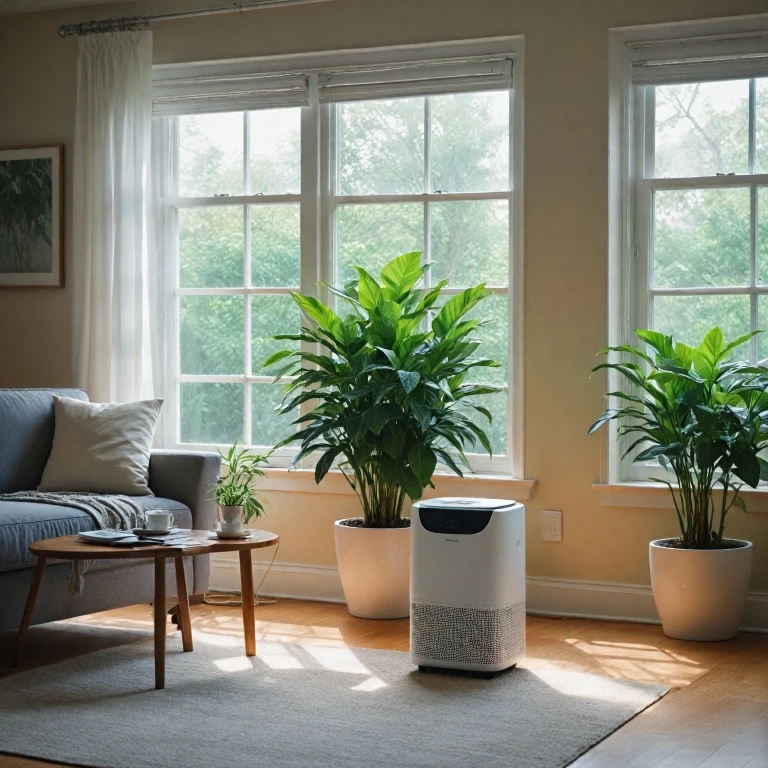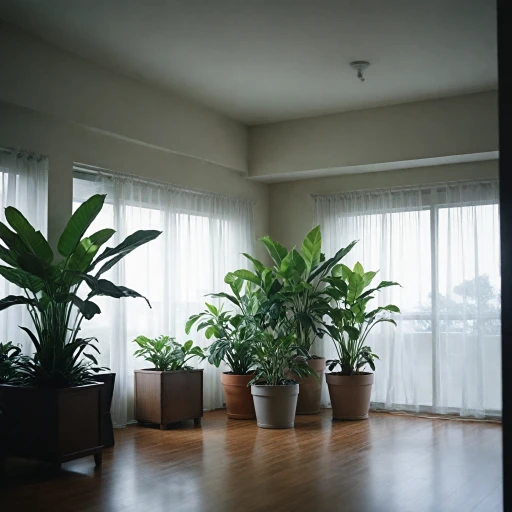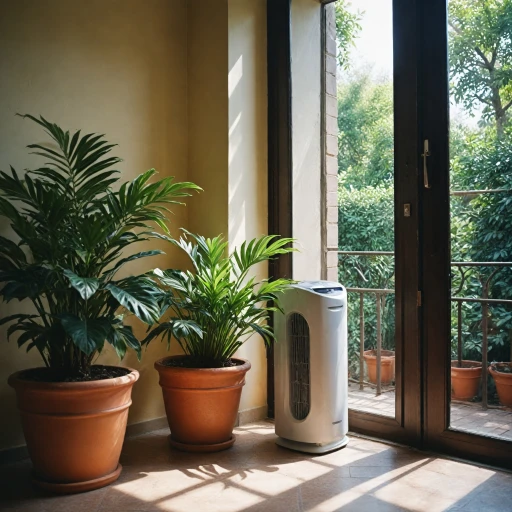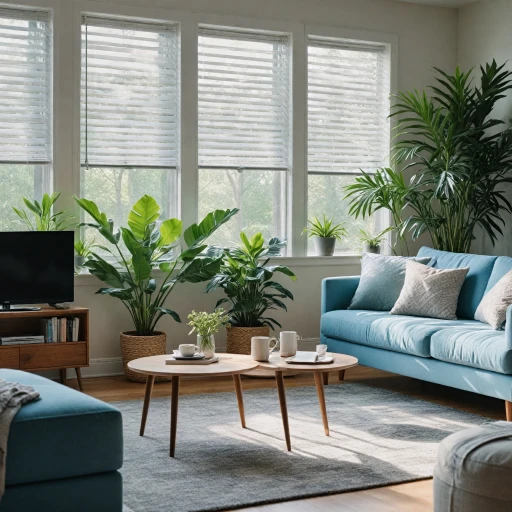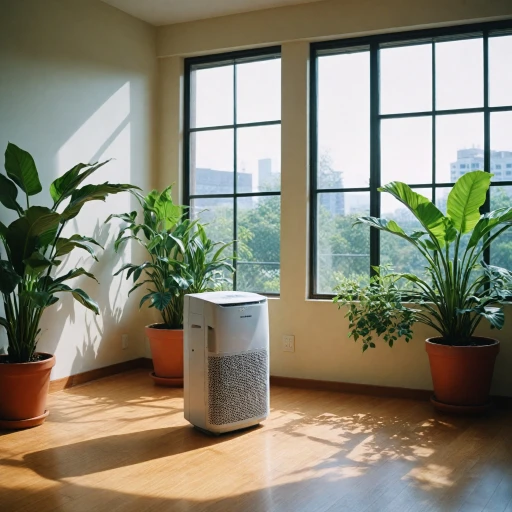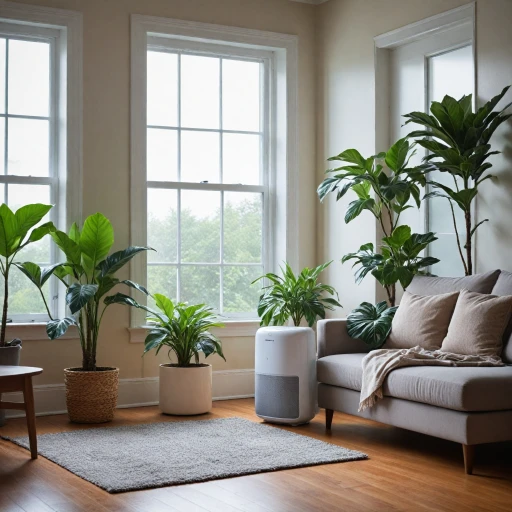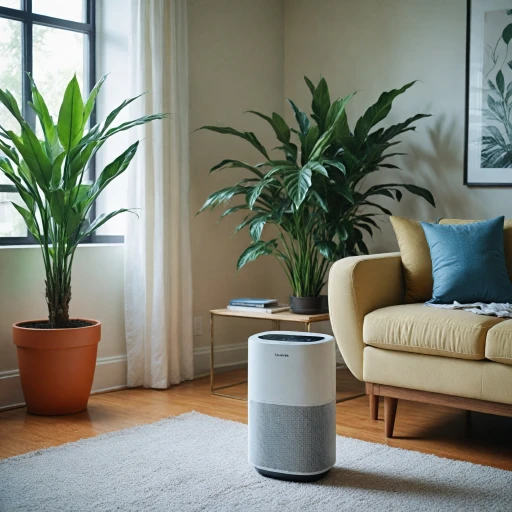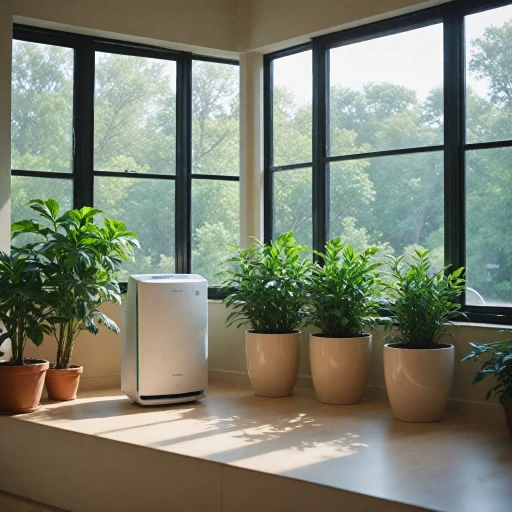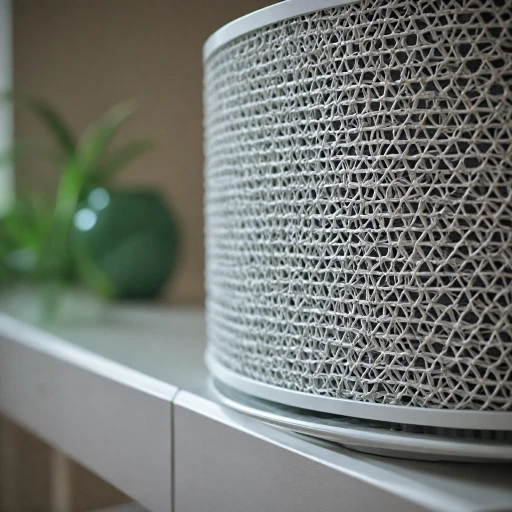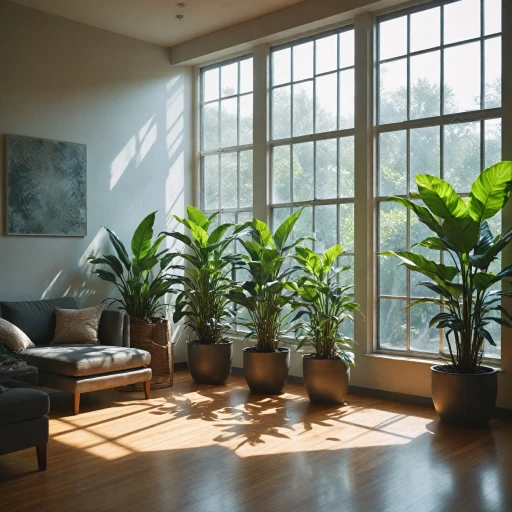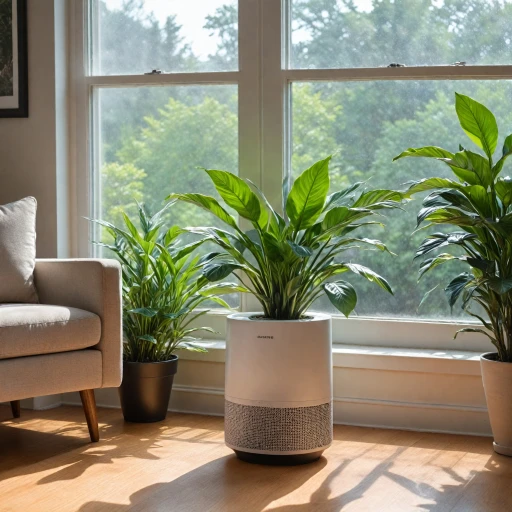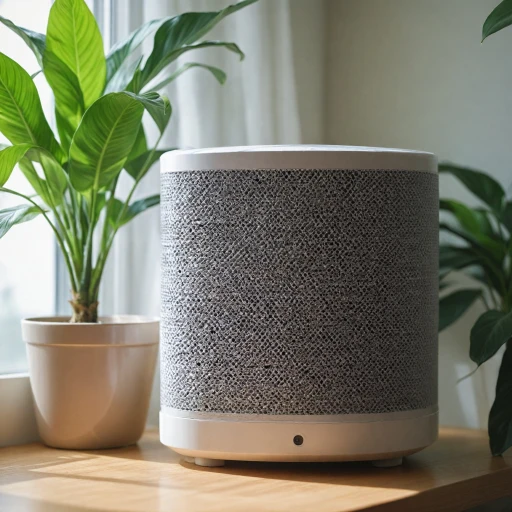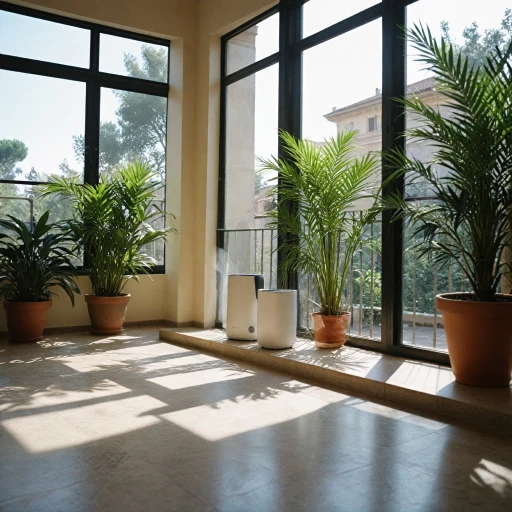
The Importance of Air Purifiers in Modern Homes
The Role of Air Purifiers in Enhancing Indoor Spaces
In our fast-paced, modern world, ensuring healthy living environments is more crucial than ever. Homeowners are increasingly turning to air purifiers to improve the air quality in their living spaces, significantly reducing the presence of airborne particles, allergens, and dust. With advancements in technology, these devices have become not only more accessible but also more efficient. Air purifiers are equipped with different types of filters, including HEPA filters and carbon filters, to effectively capture microscopic pollutants. These products offer enhanced performance in maintaining clean air, crucial for individuals who suffer from allergies or respiratory issues. By filtering out harmful particles like mold spores and other allergens, air purifiers provide a vital layer of protection indoors. The importance of air purifiers is underscored by the growing consumer demand for products that offer both efficiency and ease of use. The integration of features like auto mode and washable filters has not only improved the user experience but has also increased the longevity and cost-effectiveness of these devices. Opting for a model with a washable filter can be a smart choice, offering durability while also being environmentally friendly. Major brands like Honeywell score high on delivering quality air purifiers. These purifiers have been rigorously tested to ensure they meet industry standards for performance and efficiency. For those seeking the best in the market, a Honeywell air purifier with a washable filter is a reliable option. Excellent air quality is a gift that should not be overlooked. As pollution levels rise, taking proactive steps to secure clean indoor air is essential. For more insights on the various types of purifiers and their benefits, check this rich resource on modern air purifiers. Engaging with this information can help you make informed decisions about enhancing your home’s air quality.How Washable Filters Work
Delving into the Mechanism of Washable Filters
Understanding how washable filters function can significantly enhance your decision-making when selecting an air purifier. These filters are efficient in capturing airborne particles such as dust, pollen, and even mold spores, contributing to cleaner indoor air with every use.
The primary feature of washable filters is their ability to be cleaned and reused multiple times, which translates to cost savings over time compared to disposable filters. The typical washable filter in a purifier is often supported by a pre-filter layer and a combination of HEPA and carbon filters to optimize performance and ensure high-quality air.
How the Process Works:
- Capturing Particles: As the air passes through the purifier, the pre-filter captures larger particles like dust and pet hair, setting the stage for deeper filtration.
- Performance Efficiency: Following initial filtration, the air encounters the HEPA layer, which efficiently traps finer particles and allergens, while the carbon filter effectively tackles odors and VOCs.
- Filter Reusability: Once saturated, the filter can be washed to restore its efficiency. Brands like Honeywell often offer guidance on the best practices for maintaining these filters.
For more insights on how to optimize your purifier's usage with washable filters, explore the detailed discussion on benefits linked here.
Advantages of Using Washable Filters
Enhanced Efficiency and Cost-Effectiveness
One of the standout advantages of using washable filters in your air purifier is the combination of efficiency and cost-effectiveness. These filters are designed to capture a wide range of airborne particles such as dust, mold spores, and airborne allergens, thereby improving the overall indoor air quality. By incorporating advanced mechanisms, they can rival the performance of top-tier HEPA filters while being reusable.
Environmental Benefits and Longevity
Washable filters offer significant environmental upside. Unlike disposable options, which need regular replacement, reusable filters can be cleaned and reused multiple times. This reduces waste and conserves resources over time, making them an eco-friendly choice. By ensuring that the filter washable products are maintained properly, you contribute positively to the environment.
Home Convenience and Reliable Performance
For those prioritizing convenience, washable filters deliver. The ability to remove the filter, wash it, and quickly reinstall it keeps your air purifier running smoothly and ensures consistent air quality. Many models in the best air purifiers incorporate features like auto mode, signaling when a filter check is necessary, removing the guesswork in filter maintenance.
Ensuring Consistent Quality
Reputable brands, including Honeywell, have embraced this filter technology in their products due to its tested reliability and efficiency in consistently delivering clean air. Whether tackling airborne particles in general or targeting specific issues like constant dust, the scores for efficiency and performance make washable filters a viable investment for a healthier living environment.
Maintenance Tips for Washable Filters
Prolonging Filter Life for Optimal Performance
Maintaining your air purifier with washable filters plays a significant role in ensuring the air quality in your home remains at its best. Unlike disposable variations, washable filters can be reused, reducing the long-term cost of maintaining your purifier. To capitalise on this benefit, it's important to follow a regular maintenance routine. Firstly, regularly inspect your air purifier’s performance to determine when it’s time for cleaning. The filter's ability to capture dust, airborne particles, and allergens like mold spores or pollen can diminish over time if not duly cleaned. For peak efficiency, consider these tips:- Scheduled Cleaning: Establish a cleaning schedule based on usage and manufacturer's recommendations. Typically, cleaning every 2-3 months is adequate, but more frequent cleaning might be necessary if the indoor air quality is poor or if the purifier runs constantly.
- Proper Washing Techniques: Follow the manufacturer’s guidelines. The general practice involves rinsing the filter under running water and allowing it to dry completely before reinsertion. This keeps the filter particles-free, maintaining a high quality of air in your home.
- Avoid Harsh Chemicals: When washing the filters, avoid using harsh cleaners; they can damage the filter material leading to reduced lifespan and efficiency.
- Regular Purifier Check: Besides the filters, ensure the entire unit is performing well by checking components like the auto mode on Honeywell products, which are designed to adjust performance according to air quality.
Comparing Washable and Disposable Filters
Evaluating the Types of Air Filters: Washable vs. Disposable
The debate between washable and disposable filters in air purifiers is an ongoing discussion, and both types come with their own set of benefits and considerations. To understand the core differences and which might suit your needs better, let's first look at the general advantages of these two filter types:- Washable Filters:
- Cost-Effective: Since washable filters can be reused after cleaning, they can prove more economical over time compared to their disposable counterparts.
- Eco-Friendly: Reusable nature contributes to less waste, making them an environmentally conscious choice.
- Convenience of Keeping a Spare: You don’t have to rush to buy replacements, which offers a sense of convenience.
- Disposable Filters:
- Higher Initial Efficiency: Often, these filters, especially hepa and carbon filters, start with higher performance for removing small particles and allergens like dust and mold spores.
- No Cleaning Required: They require replacement rather than maintenance, which can save time.
- Specific Purpose Design: Some disposable filters are designed for specific airborne allergens or particles, providing targeted air quality improvement.
Performance and Efficiency
The performance of air purifiers highly depends on the filter type. As your air purifier becomes an essential part of your household, efficiency in capturing various particles, such as dust and other airborne particles, becomes paramount. In general, although both types of filters have excellent performance metrics, hepa and carbon filters in disposable products often test better initially for small particles like airborne allergens. However, washable filters, especially when maintained well, perform adequately for many users.Considering Costs and Maintenance
From a cost perspective, washable filters often present a lower price point in the long run, especially if properly maintained as highlighted in various sections. Disposable filters might require more frequent replacements, but they may offer higher performance directly out of the box. Therefore, determining which filter offers the best overall value often depends on price, convenience of maintenance, and desired air quality. If you're leaning towards a reliable model, brands such as Honeywell have options for both filter types. Comparing the long-term score between these options can guide you toward a quality fit based on your air quality needs.Choosing the Right Air Purifier for Your Home
Selecting the Ideal Air Purifier for Your Home
Choosing the right air purifier can significantly impact the air quality in your home. With various products available, from ones utilizing HEPA filters to those with washable filters, narrowing down the options can be challenging. To make an informed decision, consider the following aspects:
- Filter Type: Depending on your needs, consider whether a purifier with washable filters or one with HEPA or carbon filters better suits your lifestyle. An air purifier with washable filters might be preferable if you want to reduce maintenance costs over time.
- Efficiency and Performance: Check the purifier's Clean Air Delivery Rate (CADR) score, which indicates its efficiency in filtering specific particles like dust, mold spores, and airborne allergens.
- Room Size: Each air purifier is designed to handle a specific room size. Ensure the model you select is adequate for the intended space.
- Noise Level: If the operational sound is a concern, especially for bedrooms or offices, look for products with a quieter performance.
- Additional Features: Some purifiers include extra features like auto mode, air quality indicators, or integrated pre-filters that enhance both convenience and filtration efficiency.
- Brand and Reliability: Brands like Honeywell offer trusted quality and often come highly recommended based on rigorous testing and performance records.
Ultimately, the best air purifier for you should align with both your budget and specific air quality needs, ensuring a healthier indoor environment.
